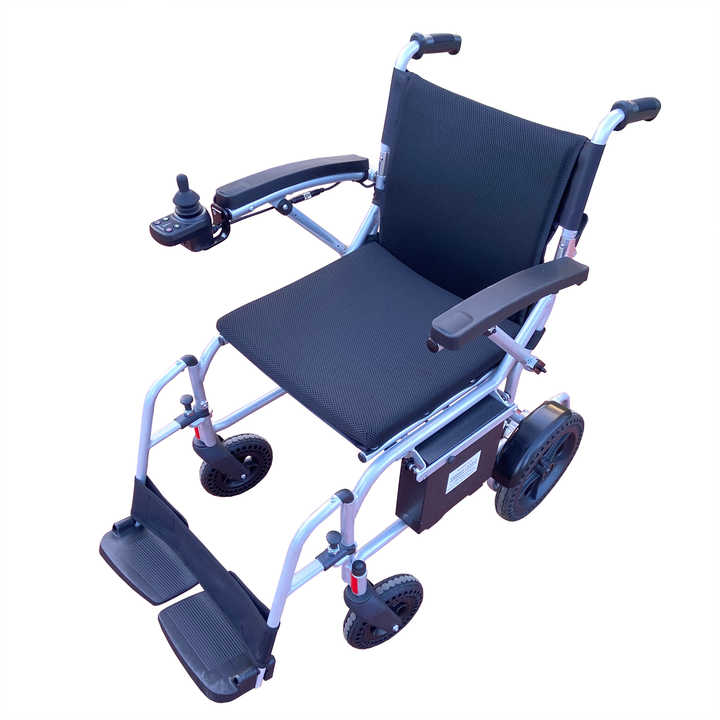Introduction to foldable power wheelchairs
Foldable power wheelchairs have revolutionized mobility for individuals with limited movement, offering a blend of portability and advanced technology. In recent years, the demand for these innovative devices has surged. They provide a convenient solution without compromising on functionality, designed by specialized manufacturers and customized in factories to meet diverse user needs. Understanding how these wheelchairs work involves examining the individual components and systems that contribute to their efficiency and ease of use.
Battery Technology in Power Wheelchairs
Lithium-Ion Batteries
One of the key features of modern foldable power wheelchairs is the use of lithium-ion batteries. These lightweight and efficient batteries offer a high energy density, providing longer operational times compared to traditional lead-acid batteries. On average, a lithium-ion battery can deliver 80-100% of its maximum output, translating into longer travel distances per charge. With weights averaging around 1.5 kg, they are significantly lighter, enhancing the overall portability of the wheelchair.
Lead-Acid Batteries
While some power wheelchairs still utilize lead-acid batteries, they are becoming less common due to their heavier weight and lower efficiency. Lead-acid batteries typically use only 50-70% of their available power, and their weight can be a limiting factor for foldable models. However, they offer a cost-effective alternative for users with less intensive mobility needs.
Motor Mechanisms and Functionality
Types of Motors
Foldable power wheelchairs usually feature either brushed or brushless motors, which are essential for motion. Brushless motors offer several advantages, including lower maintenance requirements and a longer lifespan compared to brushed motors. The choice of motor affects the wheelchair's performance, efficiency, and maintenance needs.
Brushless Motors
Brushless motors are preferred by many manufacturers, offering smooth and quiet operation. They eliminate the friction and wear associated with brushes in traditional motors, providing a reliable and durable option for heavy-duty usage. Their efficiency and longevity make them an ideal choice for custom-built wheelchairs tailored to specific user requirements.
Joystick Controls and User Interface
User-Friendly Controls
The primary interface for operating foldable power wheelchairs is the joystick control system. This intuitive control mechanism allows users to adjust speed, direction, and other settings with ease. Joysticks often include features like speed adjustment in 0.5 mph increments and a battery status indicator, providing users with real-time feedback on their wheelchair's performance.
Customization Options
Custom joystick configurations can be tailored to meet specific user needs, including options for chin or foot controls for those unable to use their hands. Voice or breath-activated controls are also available, ensuring accessibility for all users. These custom solutions are typically developed in specialized factories where manufacturing processes can be adapted to client specifications.
Drive Systems and Wheel Configurations
Types of Wheel Drives
Foldable power wheelchairs come with various wheel drive configurations designed to handle different terrains and environments. Rear-wheel, front-wheel, mid-wheel, and all-wheel drives are common options, each offering unique benefits.
Rear-Wheel Drive
Rear-wheel drive models are most similar to traditional manual wheelchairs and are well-suited for both indoor and outdoor use. They feature two large drive wheels at the back and two smaller caster wheels for stability, providing a balanced and versatile mobility solution.
Seating System and Comfort Options
Seating Customization
Seating systems in foldable power wheelchairs are designed for comfort and safety, featuring padded, contoured seats. Users can choose from adjustable or static options, with custom configurations available to meet specific postural needs. Additionally, features like tilt-in-place and leg elevation enhance user comfort, further personalizing the wheelchair to individual preferences.
Safety Features
Most models include seat belts and additional safety features to prevent falls, particularly important in cases of sudden stops or unexpected bumps. These features are essential in ensuring user safety and are rigorously tested during the manufacturing process to comply with industry standards.
Portability and Foldability Features
Lightweight Design
One of the standout features of foldable power wheelchairs is their lightweight design, enabling easy transport and storage. Advanced materials and compact engineering allow these chairs to be folded or disassembled without compromising strength or durability.
Factory Customization
Factories can custom-build wheelchairs to incorporate specific foldability features, accommodating user needs for travel or limited storage space. Lightweight materials like aluminum and carbon fiber are commonly used, reducing overall weight and enhancing portability.
Safety Features and Precautions
Standard Safety Measures
Ensuring user safety is a primary concern, with various features integrated into the design of foldable power wheelchairs. Anti-tip wheels, stability control systems, and reinforced frames are among the standard safety measures adopted by manufacturers.
Weather Protection
Protection against weather elements is crucial, particularly for electronic components like the joystick. Manufacturers may offer custom waterproofing solutions to protect the electronics, preventing damage and ensuring reliable operation regardless of weather conditions.
Cost Considerations and Long-Term Value
Initial Investment
The initial cost of a foldable power wheelchair can be significant, but it is often outweighed by the long-term benefits and savings. High-quality components and custom features may increase upfront expenses but result in reduced maintenance and longer lifespan.
Lifetime Expenses
Manufacturers often provide warranties and post-purchase support to help manage lifetime costs. Regular maintenance and timely battery replacements are crucial for extending the functional life of the wheelchair, providing a cost-effective mobility solution over time.
Choosing the Right Foldable Power Wheelchair
User Needs Assessment
Selecting the right foldable power wheelchair involves assessing individual user needs, including weight, height, mobility requirements, and intended use. Custom solutions can be tailored to meet these specific needs, ensuring optimal performance and comfort.
Factory Consultation
Consulting with manufacturers helps in understanding available options and customization possibilities. This ensures users receive a product that aligns perfectly with their lifestyle and mobility needs, crafted with precision in specialized factories.
Excellent Provide solutions
Foldable power wheelchairs offer a blend of technology and convenience, representing a significant advancement in mobility devices. For those looking to purchase a wheelchair, consulting with manufacturers can provide insight into custom solutions tailored to specific needs. Regular maintenance and selecting the right components can enhance performance and longevity, making foldable power wheelchairs a practical and reliable choice for users seeking independence and ease of use. Partnering with a reputable factory for custom builds ensures a product that meets all safety and functional standards.

Post time: 2025-07-18 13:03:05

.png)





































